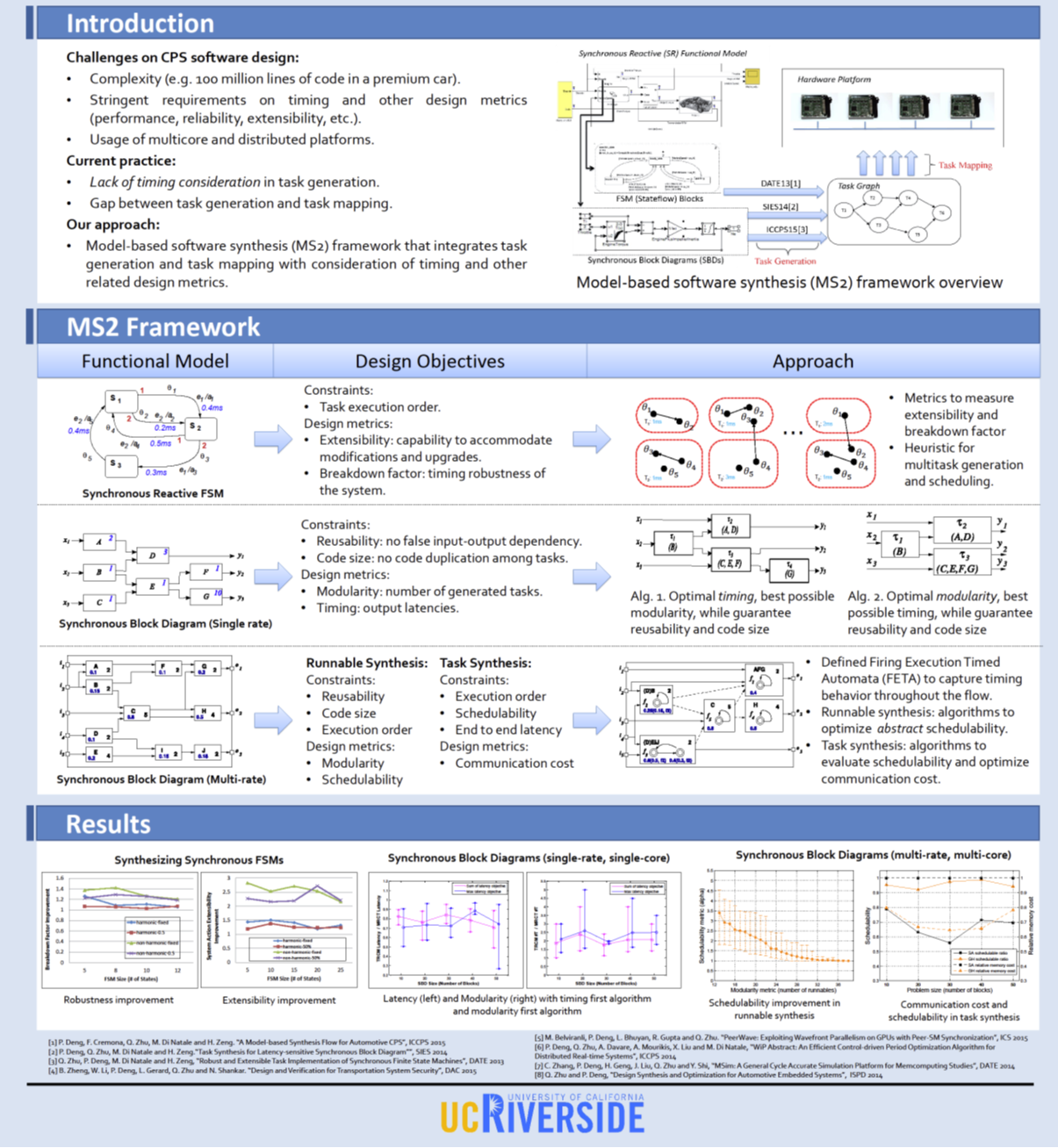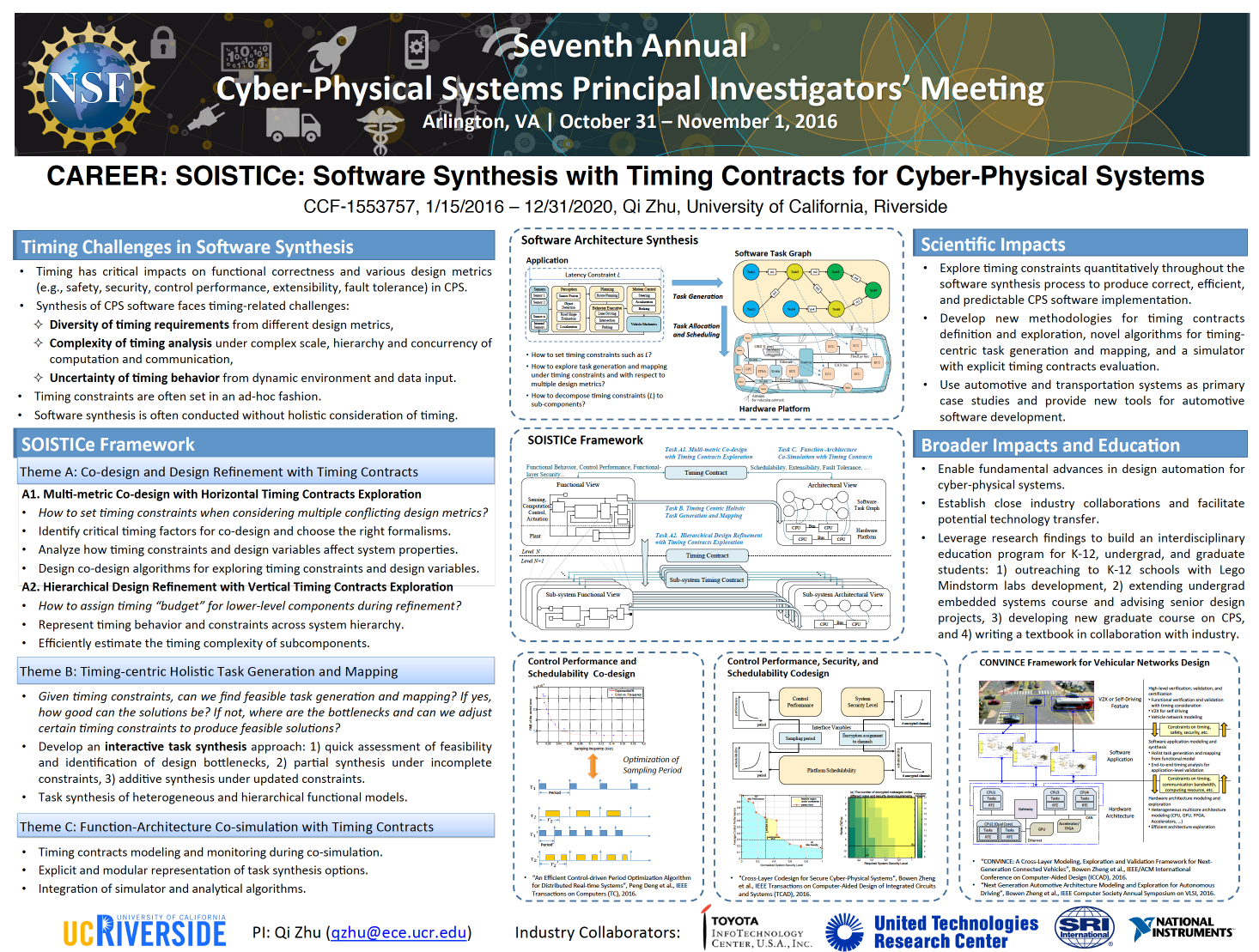Research
Model-based Software Synthesis for CPS
Overview:
Software design and implementation has become critical and increasingly more challenging for cyber-physical systems (CPS) in domains including automotive, avionics, robotics, industrial automation, etc. The challenges in CPS software rise from rapid increase of system scale and complexity, close interaction between cyber components and dynamic physical environment, more sharing and contention among software functions over multicore and distributed platforms, and stringent requirements on system timing and design metrics such as performance, fault tolerance, reliability and extensibility.
Our research focus on building a model-based software synthesis framework for cyber-physical systems and automates and optimize the generation of CPS software tasks from functional models, and the mapping of those tasks onto real-time embedded platforms in an integrated fasion, with respect to various design metrics including real-time performance, extensibility, reusability, modularity and memory, while guaranteeing functional correctness.
Our research focus on building a model-based software synthesis framework for cyber-physical systems and automates and optimize the generation of CPS software tasks from functional models, and the mapping of those tasks onto real-time embedded platforms in an integrated fasion, with respect to various design metrics including real-time performance, extensibility, reusability, modularity and memory, while guaranteeing functional correctness.
Framework:
SOISTICe: Software Synthesis with Timing Contracts for Cyber-Physical Systems
Overview:
In current design practice, timing constraints are often set in an ad-hoc fashion without quantitative analysis of their impacts on various metrics (e.g., shorter sampling periods and sensor-to-actuator latencies usually lead to better sensing and control performance, but could be detrimental to schedulability, extensibility and fault tolerance). Furthermore, software design and implementation are often conducted without continuous and holistic consideration of timing. Such issues often lead to infeasible solutions, long design cycles, and ultimately inferior and error-prone CPS software implementations. To address these challenges, we are developing SOlSTICe, a software synthesis framework that quantitatively explores timing constraints for multiple conflicting design metrics (through horizontal contracts) and across multiple abstraction layers (through vertical contracts), and uses these timing constraints to drive the design space exploration.
Framework:
Related Publications:



